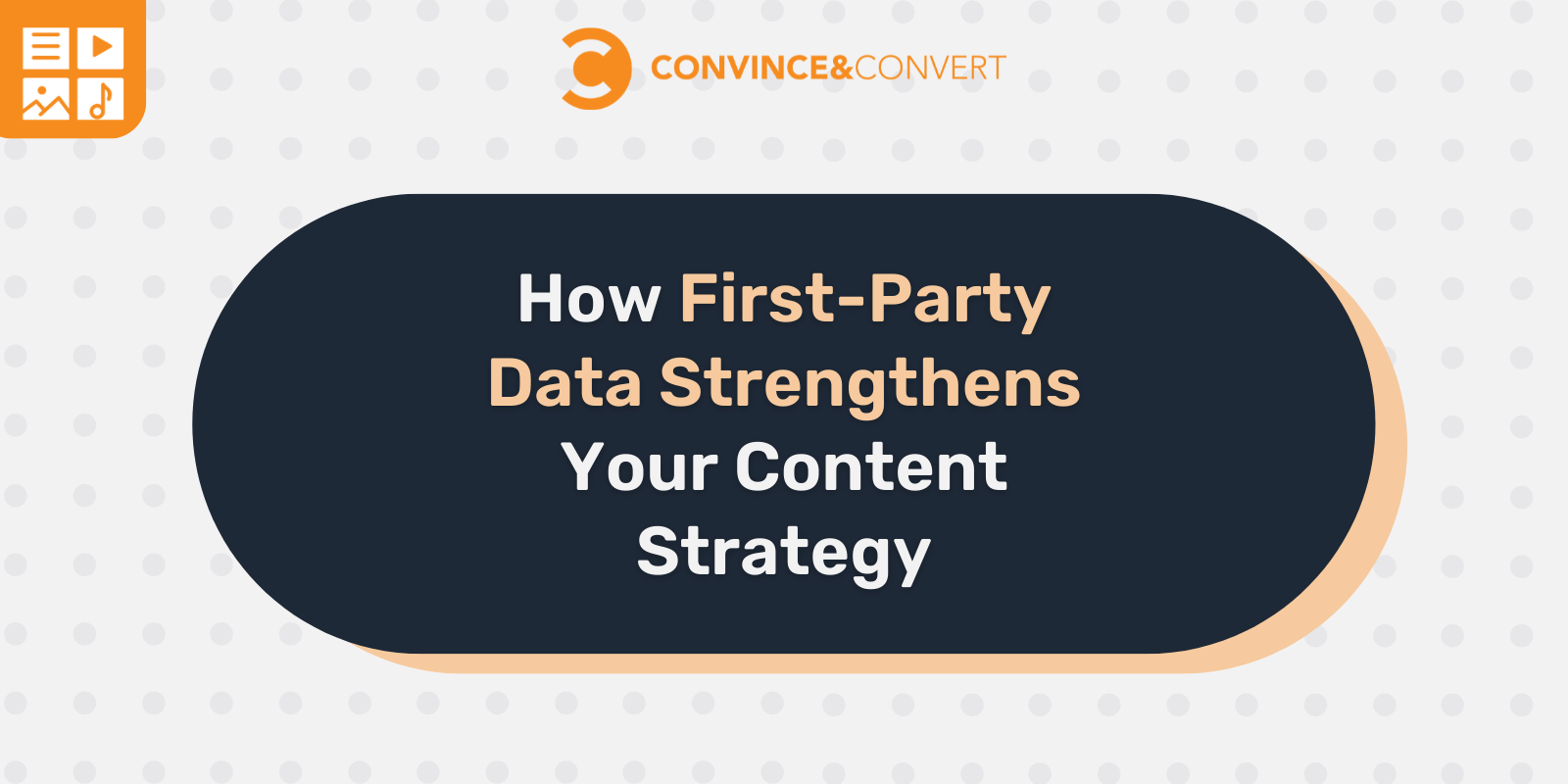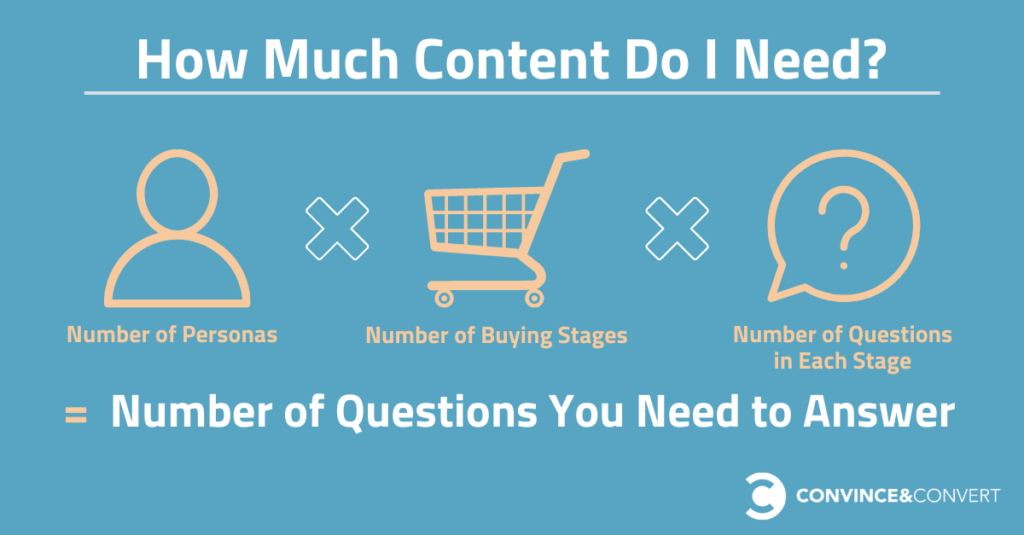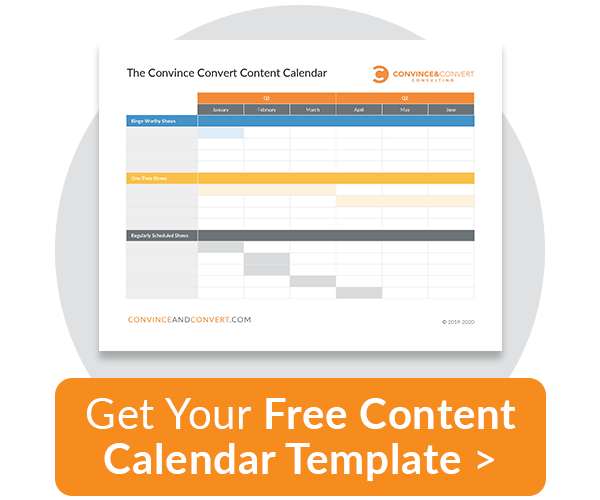
Once upon a time, somewhere in the 1960s, ad men like Don Draper ruled the world of advertising and marketing with a savvy finesse. “If you don’t like what’s being said, change the conversation,” is a line that’s often quoted from AMC’s Mad Men.
While this approach sounds groovy and made every agency boatloads of money, today, we know that solutions are what sell and interest is what drives intent. In fact, first-party is the bedrock upon which all great content marketing strategies are built.
Using First-Party Data to Inform Your Content Marketing
What Don willfully ignored was the wants and needs of his and his client’s audience. The benefit of first-party data, which is defined as data that’s been explicitly provided by the user taking cognizant action, is that you’re hearing directly from your audience about who they are, what they do, where they exist, and what they’re interested in.
Instead of marrying information and intuition, Don went with his gut on everything and believed creative instinct drove interest and sold solutions. He even threw a full research report straight in the trash in the pilot episode—right in front of the researcher!
To better understand the solutions your buyers need, you must listen closely. Once you hear it, you’ll soon learn that first-party data is the stuff that talks the loudest and makes the most sense.
The Cookies Crumble
For years, digital leaders preached about the benefits of using third-party sites like Facebook to take advantage of their assemblage of audience while simultaneously warning us about the dangers of building on rented land. Indirectly, they were talking about the value and control first-party data offers.
Now, as we move into a cookieless world, first-party data takes on a greater role. Fortunately, even if you’re still preparing for Google’s cookieless future, you have more first-party data at your disposal than you likely realize.
Together, we’ll identify these sources, what they offer, how we can extract value, and how it will benefit your strategy.
Building a Foundation
Ideally, each asset you produce needs to speak to your ICP (ideal customer profile) and the different stages of the buying journey they’re experiencing. Keeping your content philosophy this straightforward allows you to focus on the customer’s needs, pain points, and timeline.
As we shared in our sixth annual content consumption report, consumption has risen 33% in the past two years. Simply put, buyers need more content along their buying decisions. While your audience needs more and more from you, this approach makes it easier to scale your content operations. Jay Baer wrote about this in How Much Content Do You Need? Here’s a Formula. and the premise is staggeringly simple.

Essentially, your initial list of [how many questions do I need] can be generated using this formula:
Number of Personas X Number of Buying Stages X Number of Questions in Each Stage = Number of Questions You Need to Answer
Leveraging your first-party data will allow you to answer these questions to construct your content marketing strategy.
While we have access to millions of first-party registrations of B2B content across our platform at NetLine, there’s still quite a bit of first-party data at your disposal even if you aren’t using content syndication.
Your CRM
The data found within your CRM is likely the most powerful you’re going to have at your disposal. How you build and segment your audiences, decipher who’s interested in what products, where they first engaged you, and how long they’ve been in your system influence how you build campaigns.
Truthfully, this information should be the core of your content foundation. So long as you’re passing your data fields through to your CRM correctly via each of your marketing channels, you should have the utmost confidence in the parameters you’re seeing.
Customer Data
Now, granted, we know that the majority of our customer data is going to be stored within our CRM; but it’s important to differentiate the two.
Your CRM holds every bit of information you’re amassing on your audience, regardless of whether you’ve already gotten them to convert. But knowing what has gotten someone to commit and knowing which attributes are most common across that segment give you the best opportunity to compare and contrast the differences of your buyers and your prospects.
Depending on the tools at your disposal, you can also evaluate the differences in content demand and consumption in these two larger segments. If, for example, prospects are more interested in “How To” content while buyers typically engage with “Why” or “What” explanations and/or statements, the thing you’ll want to answer is what drives a prospect to become a customer? Perhaps this is something you already know but even an exercise as simple as this can be instrumental in driving YOY growth.
Newsletters
The joke is that everyone and their father now has a podcast. The funny thing is that what everyone actually has is a newsletter.
Newsletters afford creators more control and audiences a higher quality product. As author Mike Raab describes it:
“The real reason that we’ve seen an explosion in email newsletters over the past few years has been that they’ve become easily monetizable, even for individual authors … Utilizing email as a passive distribution channel keeps an audience engaged, and maintaining a consistent cadence trains that audience to carve out time to consume the content.”
Assuming the content is good (frankly, it has to be), the biggest questions here are:
- Who’s opening?
- Which content is driving opens?
- Which themes are the most popular?
Thanks to opt-ins found across every newsletter, you’ll be getting names, emails, and maybe if you’re lucky some company information at sign-up. Regardless, this is one of the best sources of first-party information businesses can leverage in their content strategy.
Gated Content
Blogs and ungated assets are fantastic for building long-term awareness and presenting new ideas at the top of the funnel. But as you’re building out your content strategy, you’re going to want to know significantly more than what Google Analytics can provide.
Gated content still carries a taboo it doesn’t deserve in the marketing world. As research from Orbit Media and Ascend 2 states, B2B website visitors are willing to provide contact information in exchange for relevant content. The key here is providing relevant content…which you’d know what should be offered when you’re asking for personal and professional information.
NetLine, for example, is able to capture 18-points of information through our forms which makes it far more worthwhile for marketers while 65% of the typing is already done for the end user.
Social Channels
Social media accounts certainly don’t end up coming to mind when discussing first-party data. There are a few different ways to obtain fully-permissioned first-party data from Facebook, Twitter, and the like, however.
They might not be as prevalent as they once were, but social login prompts can still provide valuable data with a simple opt-in. For example, thanks to 50 different permission options via Facebook and Instagram, both you and your audience can control which data points are being shared, allowing for more personalization. As you become more comfortable with your audience, you can gradually change your settings to match your data needs while still securing the needed permissions from your visitors.
It needs to be said that social data isn’t the best first-party data one could procure, of course. However, the opportunity to engage your audience where they’re spending 147 minutes of the day on average is just too good to pass up.
Surveys
Asking questions is the easiest way you can get direct access to first-party data. Want to know exactly what your audience and/or buyers want or need? Ask them!
Surveys offer you the chance to go beyond who your buyers and prospects are so you can dig down to the what, why, and how. You can be much more open-ended with your questions and get more granular and quantify different answers.
Of course, what people do is more reliable than what they say they’ll do. Even when users believe they’re being absolutely honest, behavior has a funny way of differing from a stated intention. This is an important caveat for any survey, but if you’re the originator of the survey, it still counts as first-party data! So have at it!
Bonus
By adding a small survey to your content post-registration, you’ll be able to identify intent signals that could be instrumental in shaping your strategy. For example, NetLine discovered that users requesting webinars are more likely to make a purchase while those requesting ebooks, the most popular content format, were less likely to be at the bottom of the funnel.
Bringing it All Together
Having access to all of this data is freeing. By allowing data to be our guardrail, we get to have fun with our brand voice, execution, and presentation.
Imagine the kind of creativity Don Draper would have if he knew:
- The names of his ICP and his customers
- Their companies, their job titles, their job areas, etc.
- How much money their companies generated
- What they’re interested in learning more about
- What their pain points were
- When they might be looking to invest
- Who else might be involved in a buying decision
We see a slew of data each and every day. By following the first-party data that’s right under our noses, we should know what buyers want and what they couldn’t care less about.
By studying the topics your buyers are into, which formats they’re more likely to want, and how long they might take to make a purchase decision, your content strategy is well on its way to delivering some of the best ROI you could’ve ever projected.

